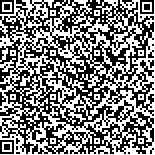| 引用本文: | 姜斯乔,谢舒恬,郑元铸,柯凡,张晨旭,冯慕华,高海鹰.四种常见湖泊沉积物氮磷通量估算方法对比分析.湖泊科学,2022,34(6):1923-1936. DOI:10.18307/2022.0610 |
| Jiang Siqiao,Xie Shutian,Zheng Yuanzhu,Ke Fan,Zhang Chenxu,Feng Muhua,Gao Haiying.Comparative analysis of four universal estimation methods of nitrogen and phosphorus fluxes in lake sediments. J. Lake Sci.2022,34(6):1923-1936. DOI:10.18307/2022.0610 |
|
| |
|
|
| 本文已被:浏览 3903次 下载 2929次 |

码上扫一扫! |
|
|
| 四种常见湖泊沉积物氮磷通量估算方法对比分析 |
|
姜斯乔1,2, 谢舒恬2,3, 郑元铸4, 柯凡2, 张晨旭5, 冯慕华2, 高海鹰1
|
|
1.东南大学土木工程学院, 南京 210096;2.中国科学院南京地理与湖泊研究所湖泊与环境国家重点实验室, 南京 210008;3.河海大学水文水资源学院, 南京 210098;4.浙江省温州市生态环境科学研究院, 温州 325000;5.南京建邺城市建设集团有限公司, 南京 210000
|
|
| 摘要: |
| 湖泊沉积物-水界面营养盐释放是研究湖泊环境行为的重点关注对象,但目前对于湖泊通量的估算方法选择缺乏横向定量比较.以南京莫愁湖为研究对象,在冬春夏3季采用静态释放培养法、机械搅拌培养法、流动培养法和间隙水浓度扩散模型法4种常见的湖泊通量培养方法进行氮磷释放对比实验.结果表明,非扩散模型法(静态释放、机械搅拌、流动培养)在冬季存在负通量,随着气温升高,夏季通量估算值为正,且该3种方法通量数值差异不显著.间隙水扩散模型法在三季实验中结果数值无负值,对比非扩散模型组具有显著差异,约低一个数量级.不同方法在培育过程中溶解氧和pH变化差异显著,流动培养法最为稳定.4种方法的通量结果在不同季节变化趋势具有显著相关性,非扩散模型法估算结果作为表观通量值,适用于计算湖泊沉积物营养盐释放总量,其中静态释放法结果稳定性较差,平行组相对标准偏差最高达70%;流动培养法稳定性最好,平行组相对标准偏差最高仅21%.扩散模型法估算结果作为理论释放值,在估算浅水湖泊通量时低于实际释放通量,适于探究深水湖泊沉积物间隙水动态释放过程,有助于分析湖泊沉积物性质.不同培养方法,有其侧重点,根据不同湖泊状况,应选取合适方法进行通量估算. |
| 关键词: 氮磷释放 通量估算方法 对照实验 扩散模型 莫愁湖 |
| DOI:10.18307/2022.0610 |
| 分类号: |
| 基金项目:国家自然科学基金项目(41877482,41471075)和江苏省高校水处理技术与材料协同创新中心项目联合资助. |
|
| Comparative analysis of four universal estimation methods of nitrogen and phosphorus fluxes in lake sediments |
|
Jiang Siqiao1,2, Xie Shutian2,3, Zheng Yuanzhu4, Ke Fan2, Zhang Chenxu5, Feng Muhua2, Gao Haiying1
|
|
1.School of Civil Engineering, Southeast University, Nanjing 210096, P. R. China;2.State Key Laboratory of Lake Science and Environment, Nanjing Institute of Geography and Limnology, Chinese Academy of Sciences, Nanjing 210008, P. R. China;3.College of Hydrology and Water Resources, Hohai University, Nanjing 210098, P. R. China;4.Wenzhou Institute of Eco-environmental Sciences in Zhejiang Province, Wenzhou 325000, P. R. China;5.Nanjing Jianye Urban Construction Group Co., Ltd, Nanjing 210000, P. R. China
|
| Abstract: |
| Nutrient releasing at the sediment-water interface (SWI) is the focus of environmental behavior research in lakes, but there is a lack of lateral quantitative comparison in the methods used to estimate lake fluxes. In this paper, Lake Mochou in Nanjing was taken as the research object, and four common lake flux estimation methods, such as static release method, mechanical agitation method, flow cultivation method and pore water concentration diffusion model method, were used to conduct comparative experiments on nitrogen and phosphorus release in winter, spring and summer. The results showed that the non-diffusion model (static release, mechanical agitation and flow cultivation) had negative flux in the winter, and the estimated flux was positive in the summer with the increase in temperature, and there was no significant difference in the flux values between the three methods. The results of the pore water diffusion model method showed no negative values in the three-season tests, which were significantly different from those of the non-diffusion model groups with about one order of magnitude lower. There were significant differences in dissolved oxygen and pH among different methods, and the flow cultivation method was the most stable. The flux results of the four methods were significantly correlated with each other in different seasons. As the apparent flux value, the estimation results of the non-diffusion model method were suitable for calculating the total nutrient release of lake sediments. The static release method showed poor stability, and the relative standard deviation of the parallel group was up to 70%. The flow cultivation method had the best stability, and the relative standard deviation of the parallel group was only 21%. As the theoretical release value, the estimated result of the diffusion model is lower than the actual release flux of shallow lake flux, which is suitable for exploring the dynamic release process of sediment interstitial water in deep-water lakes and helpful for analyzing the properties of lake sediments. Different cultivation methods have their own emphases. According to different lake conditions and experimental needs, appropriate methods should be selected for flux estimation. |
| Key words: Nitrogen and phosphorus release flux estimation method control experiment diffusion model Lake Mochou |
|
|
|
|